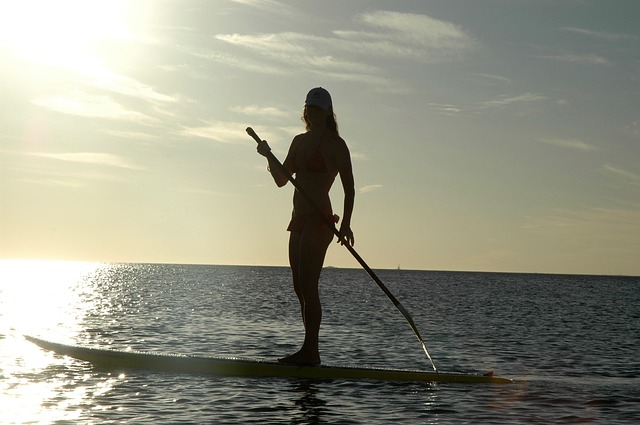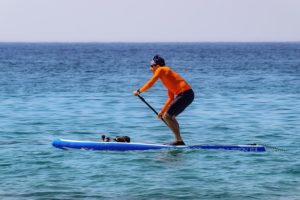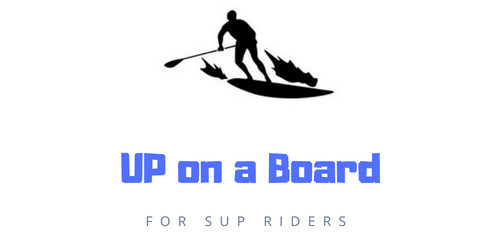First Time on a Paddle Board: What You Need to Know

So, you’ve decided that you want to experience the paddle board craze. If you love being out on the water, you won’t be disappointed. Getting out on a paddle board for the first time is exciting! Thinking back on my first experience with SUP, reminded me of some helpful things that a first timer should know before they get out on the water.
What you need to know when paddle boarding for the first time:
- Check the Weather Report
- Prepare for the Water Conditions
- Transporting your SUP or Rental Options
- Safety Precautions
- Using an Inflatable
- Things You Should Have
- Prepare to Get Wet
- It’s OK to Kneel
- How to Stand Up
- How to Balance
- How to Paddle
- Enjoy the Water
Check the Weather Report
It’s definitely a good idea to glance at the weather forecast to prepare for inclement weather.
Storms can move in quickly and the last thing you want is for your fun to be ruined by the weather.
If you will be out in sunny skies make sure to wear sunscreen.

Prepare for Water Conditions
Paddle boarding in the ocean is much different than a calm lake. If your first experience will be riding in the ocean, be a little more patient.
It’s going to be a bit more of a challenge to maintain your balance the first time with waves or rough waters. If you go into the experience knowing this ahead of time, then it will help you to mentally prepare, so you won’t allow yourself to get frustrated if it’s difficult to ride.
I’d recommend starting on calm waters until you can get the hang of it, but understand that a lot of people go on vacation near the ocean, so that tends to be their first opportunity to ride SUP.
Transporting a SUP or Renting
If you already purchased a SUP, then depending on the type of board you purchased will depend on what measures you will need to take to transport it.
You may want to check out my post on why I think an inflatable is the best purchase for a beginner. I purchased this Merax Inflatable before I started paddle boarding and really love the board.
If you happened to have purchased a hard surface board, then you will most likely need roof racks for your vehicle for the transport.
Many inflatables come with handles pre-preinstalled to the board to make it easy to carry down to the water.
For a hard surface board, a shoulder strap or handles should be purchased to help you get your board down to the water.
Renting can be a great option for your first time on a SUP.
These are some of the average prices that you should expect to pay when renting:
- $20-30 per hour
- $40-50 for 4 hours
- $60-75 per day
- $150 per week
Safety Precautions
Take a look at my post on SUP Safety that goes in-depth on water safety while paddle boarding. It’s important to make sure that you are wearing a personal floatation device while out on the water.
It’s also a great idea to wear a whistle to be able to warn other water vessels of your presence.
As a first time SUP rider, it’s a good idea to go with at least one other person.
Using an Inflatable
If you did purchase an inflatable paddle board, then you don’t want to forget the pump. It will take a few minutes to inflate the paddle board using the typical hand pump.
Read the label on your SUP to make sure you’re inflating to the proper PSI levels. If your board isn’t inflated enough, it can bow in the middle and wont move as smoothly across the water.
When you finish paddle boarding, the paddle board will need to be deflated, cleaned, and dried before storing in the beg. Molds can develop if the board is stored wet.
Things You Should Have
I made the mistake of not having an ankle strap my first time on my SUP. When I fell into the water, my board took off without me, so I’d have to go swim to chase it down.
The last thing you want is to have your new board drifting away from you.
An ankle strap also helps keep you safe because your board acts as a flotation device, so it keeps it near you at all times.
You’ll want to have water nearby to stay properly hydrated.
Prepare to Get Wet
It’s almost a guarantee that you will fall into the water at least once on your first time, so dress accordingly. Even if you don’t fall in, you’re on the water, so you’ll probably want to jump in for a swim anyway.
It’s Ok to Kneel
When I first started paddle boarding, I spent some time just kneeling on my board and paddling around until I got the hang of it.
If it takes you a little while to figure out your balance, kneeling on your board is a good alternative.

How to Stand Up
You actually start from a kneeling position, while bringing one leg up first, then the other while popping straight up.
It helps to have your legs positioned about shoulder width apart and slightly staggered with knees slightly bent.
How to Balance
Use the handle as your center point on the board. It’s going to help with balance if you’re centered on the board.
Try to maintain a low center of gravity by having knees slightly bent.
As you move around the board use slight steps, so all your weight doesn’t shift to one side. Using your paddle will help aid in balance.

How to Paddle
It’s easy to confuse which way the blade of the paddle should go in the water. You want the curve or angle of the blade going out.
When paddling on the right side, your right hand should be holding the middle of the shaft, while your left is on top of the handle using the force to paddle a stroke.
You alternate to the opposite hand on the opposite side.
Check out my post on paddle board paddles for more guidance and insight on paddle board paddles.
Enjoy the Water
This is the fun part. Just take in the breeze, get some oxygen, and observe nature’s surroundings.
As you begin to glide around, the sounds of the water and surroundings will create one that relaxing experience that being around water tends to do for us.
All in all, paddle boarding is a great activity to enjoy on the water. Taking into a consideration a few simple tips will help make the initial experience more enjoyable.
It won’t take long and you’ll be out riding on the water like a pro.
Please comment below on anything that you enjoyed from this post or anything that was helpful as a SUP beginner.

